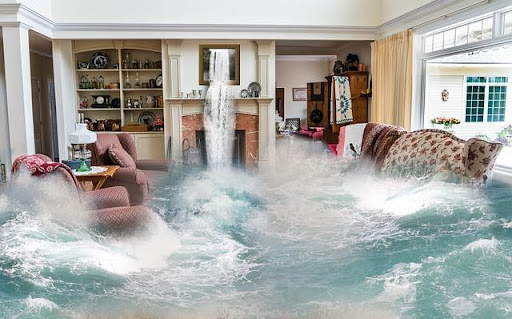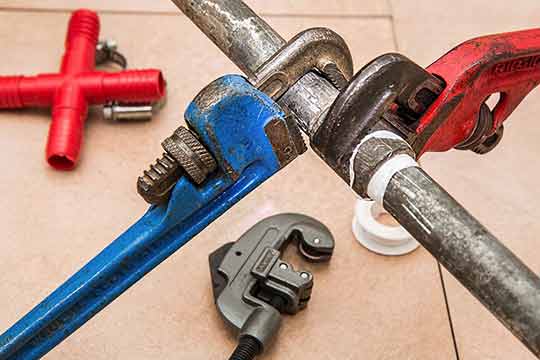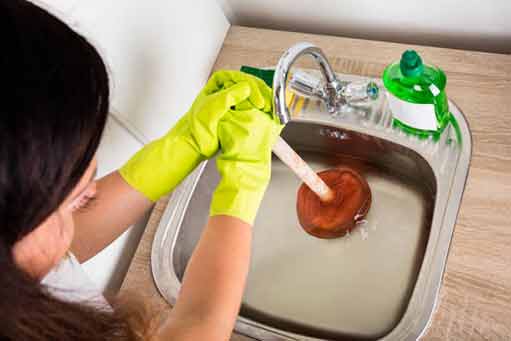
Heavy rain and flooding can cause significant damage to our homes, including our plumbing systems. Water accumulation, high groundwater levels, and sewer backups can all lead to plumbing issues that require immediate attention and repair. Below we will guide you through the steps to effectively repair your plumbing after a heavy rain and flooding event.
Assessing the Damage
The first step in repairing your plumbing after heavy rain and flooding is to assess the damage thoroughly. Look for signs of water damage or leaks in the following areas:
- Pipes and fittings
- Water fixtures
- Water heaters
- Drainage systems
- Sewer lines
- Sump pumps
Inspect the visible pipes and fixtures for any cracks, bends, or signs of corrosion. Check around your home for standing water or damp areas that might indicate a leaking pipe.
Tackle Immediate Concerns
If you discover any serious plumbing issues during your assessment, it’s crucial to address them immediately to prevent further damage. Consider taking the following actions:
- Shut off the main water supply to prevent additional water from flowing into your home.
- If you have a basement and it’s flooded, remove the water using a vacuum pump truck service or contact professional basement water extraction services.
- If you notice any sewage backups, avoid using any plumbing fixtures and call a plumber to address the issue.
- Inspect the sump pump for proper functioning. Clear any debris and test its operation to ensure it can handle future flooding.
- Remove any debris or leaves that might have accumulated around drainage areas to prevent clogs.
- In case of severe damage or if you’re unsure of how to proceed, contact a professional plumber for assistance.

In case of severe damage or if you’re unsure of how to proceed, contact a professional plumber for assistance.
Repairing Leaking Pipes and Fittings
In many cases, heavy rain and flooding can cause pipes to crack or fittings to become loose, leading to leaks. To repair leaking pipes and fittings:
First, shut off the water supply to the affected area. Then, follow these steps:
- Inspect the damaged pipe or fitting and determine the extent of the damage.
- If the pipe is damaged, measure the affected section and obtain a replacement pipe of the same material and diameter.
- Cut out the damaged section of the pipe carefully using a pipe cutter or hacksaw.
- Prepare the new pipe section by cleaning the ends and applying plumber’s tape or joint compound.
- Attach the new pipe section to the existing plumbing using suitable connectors or fittings.
- Tighten the connections securely, ensuring there are no leaks.
- If the fitting is loose, tighten it using a wrench or plumbing pliers. Apply plumber’s tape for added sealing if necessary.
- Turn the water supply back on and check for any leaks. If none are present, the repair is successful.
Addressing Water Fixture Issues
Heavy rain and flooding can also impact water fixtures, such as faucets, showers, and toilets. To repair water fixture issues:
Follow these steps:
- Turn off the water supply to the affected fixture.
- Remove the fixture by unscrewing the connections or detaching it from its mount.
- Inspect the fixture for any damage or clogs. Clean or replace any parts as necessary.
- Apply plumber’s tape to the threaded connections and reattach the fixture.
- Tighten the connections securely, ensuring there are no leaks.
- Turn the water supply back on and test the fixture for proper functioning.

Clear any debris, leaves, or sediment that might be obstructing the flow. Use appropriate tools, such as plumbers, drain snakes or pressure washers, with caution.
Restoring Functionality to Drainage Systems and Sewer Lines
During heavy rain and flooding, drainage systems and sewer lines can become overwhelmed, causing backups and inefficiencies. To restore functionality:
Take the following steps:
- Inspect the area around your home for clogs or blockages in the drainage and sewer lines.
- Clear any debris, leaves, or sediment that might be obstructing the flow. Use appropriate tools, such as plumbers, drain snakes or pressure washers, with caution.
- Contact a drain cleaning service for severe clogs or if the issue persists.
- Consider installing backwater valves or other preventive measures to minimize the risk of future sewer backups.
Conclusion
Repairing your plumbing after heavy rain and flooding requires careful assessment, immediate action, and proper repair techniques. By taking the necessary steps to address leaks, restore water fixtures, and ensure the functionality of drainage systems and sewer lines, you can effectively repair and prevent plumbing issues caused by extreme weather conditions. However, if you are unsure of how to proceed or encounter significant damage, contacting a professional plumber is always recommended to ensure the safety and integrity of your plumbing system.
